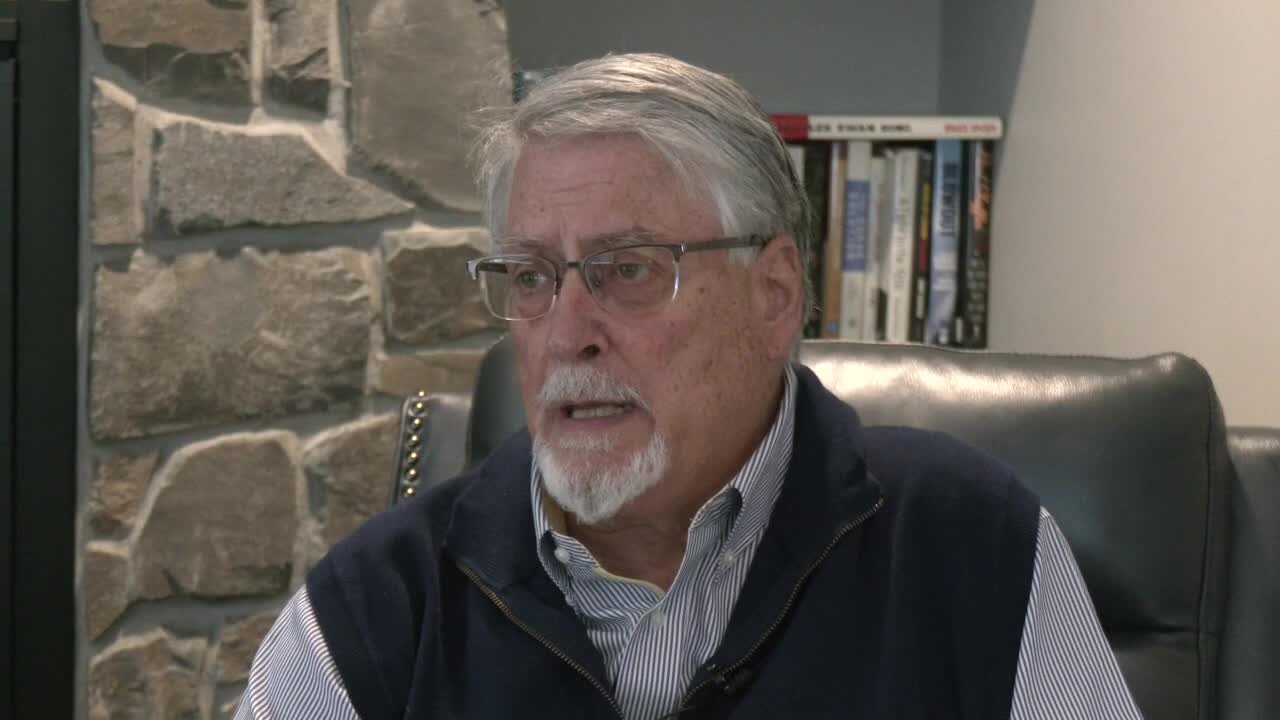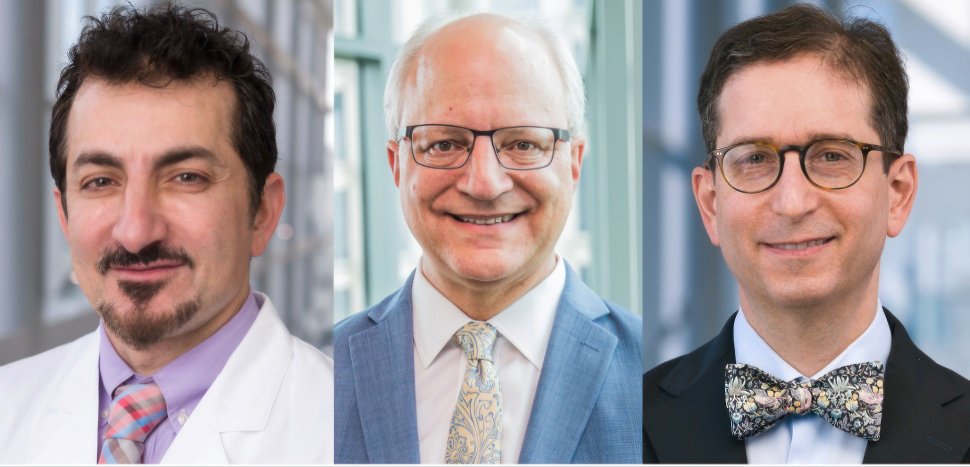AI Research
Top AI Researchers Say Language Is Limiting. Here’s Their Fix.

As OpenAI, Anthropic, and Big Tech invest billions in developing state-of-the-art large-language models, a small group of AI researchers is working on the next big thing.
Computer scientists like Fei-Fei Li, the Stanford professor famous for inventing ImageNet, and Yann LeCun, Meta’s chief AI scientist, are building what they call “world models.”
Unlike large-language models, which determine outputs based on statistical relationships between words and phrases, world models predict events by mimicking the mental constructs that humans make of the world around them.
“Language doesn’t exist in nature,” Li said on a recent episode of Andreessen Horowitz’s a16z podcast. “Humans,” she said, “not only do we survive, live, and work, but we build civilization beyond language.”
Computer scientist and MIT professor, Jay Wright Forrester, in his 1971 paper “Counterintuitive Behavior of Social Systems,” explained why mental models are crucial to human behavior:
Each of us uses models constantly. Every person in private life and in business instinctively uses models for decision making. The mental images in one’s head about one’s surroundings are models. One’s head does not contain real families, businesses, cities, governments, or countries. One uses selected concepts and relationships to represent real systems. A mental image is a model. All decisions are taken on the basis of models. All laws are passed on the basis of models. All executive actions are taken on the basis of models. The question is not to use or ignore models. The question is only a choice among alternative models.
If AI is to meet or surpass human intelligence, then the researchers behind it believe it should be able to make mental models, too.
Li has been working on this through World Labs, which she cofounded in 2024 with an initial backing of $230 million from venture firms like Andreessen Horowitz, New Enterprise Associates, and Radical Ventures. “We aim to lift AI models from the 2D plane of pixels to full 3D worlds — both virtual and real — endowing them with spatial intelligence as rich as our own,” World Labs says on its website.
Li said on the No Priors podcast that spatial intelligence is “the ability to understand, reason, interact, and generate 3D worlds,” given that the world is fundamentally three-dimensional.
Li said she sees applications for world models in creative fields, robotics, or any area that warrants infinite universes. Like Meta, Anduril, and other Silicon Valley heavyweights, that could mean advances in military applications by helping those on the battlefield better perceive their surroundings and anticipate their enemies’ next moves.
The challenge of building world models is the paucity of sufficient data. In contrast to language, which humans have refined and documented over centuries, spatial intelligence is less developed.
“If I ask you to close your eyes right now and draw out or build a 3D model of the environment around you, it’s not that easy,” she said on the No Priors podcast. “We don’t have that much capability to generate extremely complicated models till we get trained.”
To gather the data necessary for these models, “we require more and more sophisticated data engineering, data acquisition, data processing, and data synthesis,” she said.
That makes the challenge of building a believable world even greater.
At Meta, chief AI scientist Yann LeCun has a small team dedicated to a similar project. The team uses video data to train models and runs simulations that abstract the videos at different levels.
“The basic idea is that you don’t predict at the pixel level. You train a system to run an abstract representation of the video so that you can make predictions in that abstract representation, and hopefully this representation will eliminate all the details that cannot be predicted,” he said at the AI Action Summit in Paris earlier this year.
That creates a simpler set of building blocks for mapping out trajectories for how the world will change at a particular time.
LeCun, like Li, believes these models are the only way to create truly intelligent AI.
“We need AI systems that can learn new tasks really quickly,” he said recently at the National University of Singapore. “They need to understand the physical world — not just text and language but the real world — have some level of common sense, and abilities to reason and plan, have persistent memory — all the stuff that we expect from intelligent entities.”
AI Research
Artificial intelligence investing is on the rise since 2013

FARGO, N.D. (KVRR) — “Artificial intelligence is one of the big new waves in the economy. Right now they say that artificial intelligence is worth about $750 billion in our economy right now. But they expect it to quadruple within about eight or nine years,” said Paul Meyers, President and Financial Advisor at Legacy Wealth Management in Fargo.
According to a Stanford study, since 2013, the United States has been the leading global AI private investor. In 2024, the U.S. invested $109.1 billion in AI. While on a global scale, the corporate AI investment reached $252.3 billion.
“Artificial intelligence is already in our daily lives. And I think it’s just going to become a bigger and bigger part of it. I think we still have control over it. That’s a good thing. But artificial intelligence is helpful to all of us, regardless of what industry you’re in, and we need to be ready for it,” said Meyers.
Recently, Applied Digital has seen a dip in its stock by nearly 4%. The company’s 50-day average price is $12.49, and its 200-day moving average price is $9.07. Their latest report in July reported their earnings per share being $0.12 for the quarter.
“This company has grown quite a bit as a stock this year. For investors in this company, they’re up ninety-four percent this year. And I would say that you know there’s some positives and some negatives, some causes for concern, and some causes for optimism, it’s not a slam dunk,” said Meyers.
At the city council meeting on Tuesday night, Don Flaherty, Mayor of Ellendale, shared that they had not received any financial benefits from Applied Digital and won’t see any until 2026. While Harwood has yet to finalize their decision on the proposal.
AI Research
News Brief | Artificial Intelligence systems are thirsty
||| FROM SCIENCE ALERT |||
“AI chugs a bottle of water every time you chat with it.”
Originally reported by Science Alert
“Many people assume AI is inherently harmful, especially given headlines calling out its vast energy and water footprint. Those effects are real, but they’re only part of the story.”
**If you are reading theOrcasonian for free, thank your fellow islanders. If you would like to support theOrcasonian CLICK HERE to set your modestly-priced, voluntary subscription. Otherwise, no worries; we’re happy to share with you.**
AI Research
NIH Taps UT Southwestern Medical Center for $23M North Texas Alzheimer’s Disease Research Hub » Dallas Innovates

The leadership team for UT Southwestern’s new North Texas Alzheimer’s Disease Research Center includes principal investigator Dr. Ihab Hajjar (left), O’Donnell Brain Institute director Dr. William Dauer, and neurology chair Dr. Elan Louis. Their work will push the frontier of dementia research, as well as support community outreach and training for caregivers. [Photos: UT Southwestern Medical Center]
North Texas is the newest federal front line in the fight against Alzheimer’s and dementia.
The National Institute of Health has awarded UT Southwestern a $23 million, five-year grant from the National Institute on Aging to establish the North Texas Alzheimer’s Disease Research Center (ADRC). The designation makes it one of 37 such centers nationwide and the second in Texas, according to an announcement.
The new center, based at UT Southwestern Medical Center, will be a focal point for research that could reset how the disease is detected and treated. Scientists plan to probe how cardiometabolic conditions like high blood pressure accelerate dementia, train AI to hear vocal cues of cognitive decline, and build digital replicas of patients to test therapies.
Texas by the numbers
Texas, which is the nation’s second most populous state, has the third-highest number of Alzheimer’s patients, the second-highest Alzheimer’s-related deaths, and the highest dementia burden score, according to UTSW. The dementia burden score is a measure of the emotional and psychological toll on caregivers.
That reality, paired with UT Southwestern’s long-standing strength in neurology and its Peter O’Donnell Jr. Brain Institute, laid the groundwork for the designation.
Tackling cardiometabolic factors in dementia and more
Each Alzheimer’s Disease Research Center operates with a unique theme. In North Texas, the focus will be on advancing the national agenda by exploring how cardiometabolic factors, especially hypertension, contribute to Alzheimer’s and related dementias. Hypertension affects nearly 120 million Americans, according to UTSW.
The center also plans to use AI voice analysis to discover vocal changes that accompany cognitive decline. Researchers will develop “digital twin” technology to create virtual representations of patients, which will help distinguish between factors associated with normal aging and those linked to dementias, according to Dr. Ihab Hajjar, principal investigator of the new center.
“Being named an ADRC is not only an indication of scientific excellence, but also highlights an intentional commitment to research Alzheimer’s disease and cognitive impairment in our community,” said Hajjar, who is professor of neurology and internal medicine at UT Southwestern, in a statement.
Hajjar said the designation gives North Texas “the chance to make an unprecedented leap in understanding and treating Alzheimer’s disease and related dementias.”

Dr. Ihab Haijar [Photo: UT Southwestern Medical Center]
North Texas collaboration in the dementia fight
The designation is designed in collaboration with UT Dallas and UT Arlington.
The North Texas ADRC will not only enable new science but also “enhance scientific and clinical collaborations locally and nationally” while creating education opportunities for researchers, clinicians, and learners, according to UTSW.
Dr. William T. Dauer, director of the Peter O’Donnell Jr. Brain Institute, points to the new designation as proof of what can happen when institutions combine their strengths.
“This designation reflects the power of bringing together outstanding scientists, clinicians, and community partners to tackle one of the most urgent societal challenges,” Dauer said in the announcement. “It will strengthen our ability to link discoveries from O’Donnell Brain Institute laboratories with the needs of patients and families in North Texas and beyond, accelerating progress against Alzheimer’s disease and related dementias.”
Dr. Elan D. Louis, chair and professor of neurology and an investigator in the O’Donnell Brain Institute, noted that the ADRC reflects momentum already underway across his department.
“Our new ADRC reflects a growing emphasis in the Department of Neurology on learning about, understanding, and treating a group of disorders that affect millions of elderly people nationwide,” Louis said.
Feeding a national data engine for dementia research
The research generated by all ADRCs will feed into communal datasets that are made publicly available to spur collaboration and speed discovery. Hajjar said those shared efforts could offer “hope to patients with dementia and their loved ones.”
Dementia research is a core area within UTSW, and the new center builds on a decade of work by the O’Donnell Brain Institute.
UTSW also notes its No. 9 ranking for Neurology & Neurosurgery on U.S. News & World Report’s Best Hospitals list and 12 nationally ranked specialties, the most of any hospital in Texas. To date, its faculty have received six Nobel Prizes and include 24 members of the National Academy of Sciences, 23 members of the National Academy of Medicine, and 13 Howard Hughes Medical Institute Investigators.
Leadership brings specialized expertise
UTSW said the center’s leadership team brings long-standing expertise in neurological research with distinct but complementary focuses. Dr. Dauer holds the Lois C.A. and Darwin E. Smith Distinguished Chair in Neurological Mobility Research. Dr. Hajjar holds the Pogue Family Distinguished University Chair in Alzheimer’s Disease Clinical Research and Care, in Memory of Maurine and David Weigers McMullan. Dr. Louis holds the Linda and Mitch Hart Distinguished Chair in Neurology.
The ADRCs were established in 1984 as congressionally designated NIH Centers of Excellence. The mission includes improving detection, diagnosis, treatment, prevention, and care for patients and families. Each center tailors its theme to local populations and scientific priorities.
The North Texas center joins another Texas ADRC, a collaboration between UT Health San Antonio and The University of Texas Rio Grande Valley designated in 2021, strengthening the state’s role in national dementia research efforts.
Don’t miss what’s next. Subscribe to Dallas Innovates.
Track Dallas-Fort Worth’s business and innovation landscape with our curated news in your inbox Tuesday-Thursday.
-

 Business5 days ago
Business5 days agoThe Guardian view on Trump and the Fed: independence is no substitute for accountability | Editorial
-
Tools & Platforms3 weeks ago
Building Trust in Military AI Starts with Opening the Black Box – War on the Rocks
-

 Ethics & Policy1 month ago
Ethics & Policy1 month agoSDAIA Supports Saudi Arabia’s Leadership in Shaping Global AI Ethics, Policy, and Research – وكالة الأنباء السعودية
-

 Events & Conferences4 months ago
Events & Conferences4 months agoJourney to 1000 models: Scaling Instagram’s recommendation system
-

 Jobs & Careers2 months ago
Jobs & Careers2 months agoMumbai-based Perplexity Alternative Has 60k+ Users Without Funding
-

 Education2 months ago
Education2 months agoVEX Robotics launches AI-powered classroom robotics system
-

 Funding & Business2 months ago
Funding & Business2 months agoKayak and Expedia race to build AI travel agents that turn social posts into itineraries
-

 Podcasts & Talks2 months ago
Podcasts & Talks2 months agoHappy 4th of July! 🎆 Made with Veo 3 in Gemini
-

 Podcasts & Talks2 months ago
Podcasts & Talks2 months agoOpenAI 🤝 @teamganassi
-

 Education2 months ago
Education2 months agoMacron says UK and France have duty to tackle illegal migration ‘with humanity, solidarity and firmness’ – UK politics live | Politics

























![Organoids without blood vessels can't grow larger than sesame seeds—about 3 millimeters—before dying from lack of oxygen and nutrients. UNT and Stanford researchers say they've solved this problem. Seeds pictured above are not to scale. [Image: Pinchai Puntong/istockphoto]](https://aistoriz.com/wp-content/uploads/2025/09/Sesame-Seed-organoid-science-iStock-1487667097-970x464.jpg)

